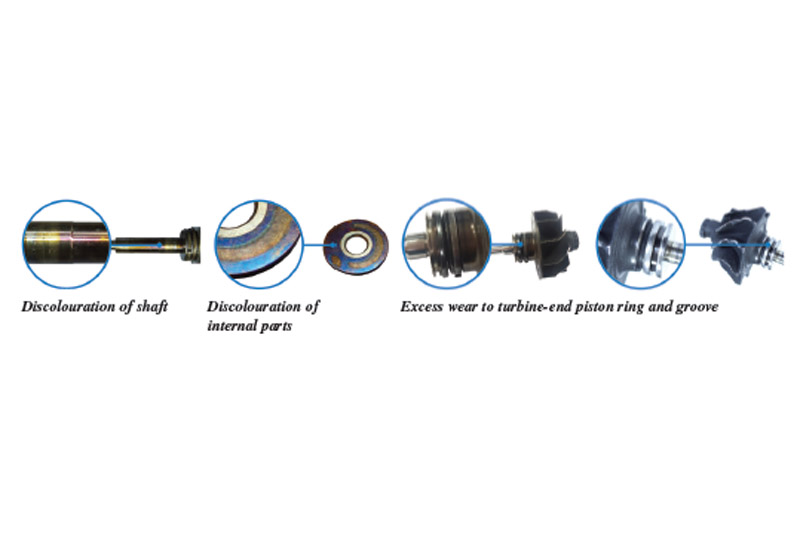
Melett outlines the basics when it comes to overheated turbochargers.
What is overheating?
Overheating is a term used to describe components that have been subjected to abnormally high exhaust temperature or insufficient cooling.
Causes
■ Hot shutdown
■ DPF issues, such as regeneration, resulting in increased exhaust gas pressure and temperatures, which lead to overheating of the turbine side of the turbocharger
■ Remapping, chipping or over-fuelling
Signs
■ Discolouration at the hot end of the turbine wheel, spreading along journal bearing area
■ ‘Heat soak’ from the turbine side of the turbocharger through to the compressor side, causing discolouration to the turbine shaft and bearing housing
■ Discolouration of internal components, including thrust washer and flinger; occasionally, without evidence of wear
■ Collapse (loss of tension) to turbine-end piston ring
■ Carbon build-up in the oil feeds and piston ring area
■ Abnormal or excess wear to turbine-end piston ring and groove
■ Turbine blades appearance being uniformly curved downwards
■ Small sections or edges of the turbine blades being fractured/partial loss of blades
Prevention
■ Check the DPF is in good working condition
■ Ensure there are no leaks in the cooling lines
■ Give the turbocharger time to cool, particularly after long journeys or harsh driving conditions









